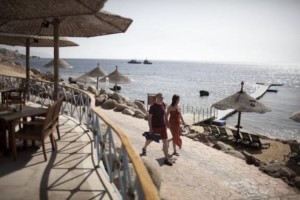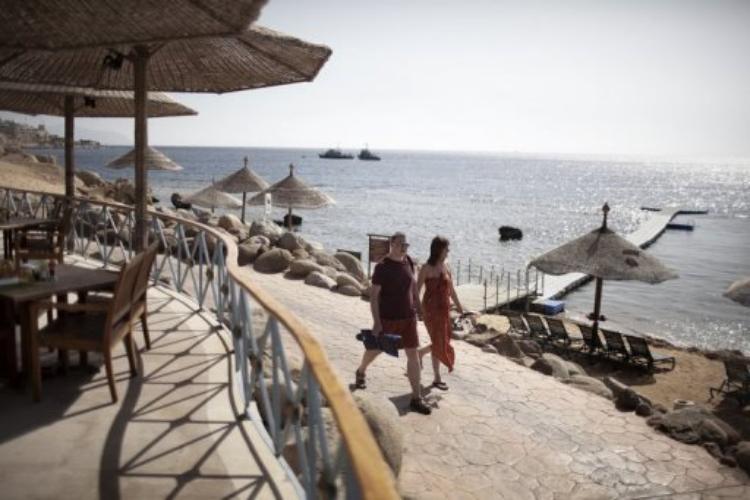
(AFP/File, Marco Longari )
Saudi tourists were the biggest spenders during 2014, spending $131.5 per night, followed by US tourists spending $101.3 per night, according to the Ministry of Tourism’s sub-accounts unit.
The average expenditure of a British tourist is approximately $70.6 per night, the German $63.4, the Ukrainian $62.2, the Italian $70.6, and the Polish $63.2, according to the unit.
Adela Ragab, Economic Adviser to the Minister of Tourism, said that Food and Beverage Services provided by hotels and restaurants account for most a tourist’s expenditure per night during 2014 with a percentage of 25.9%. This was followed by transportation services at 20.2%, then other products non-distinctive to tourism with 17.2%.
Ragab added that accommodation services accounted for 11.8% of expenditure, cultural services for 10.9%, and other tourism products and services specific to Egypt, mainly antiques, for 7.5%. Tourist guide services accounted for 6.5% of expenditure at the end of the relative distribution of the components of tourism expenditure in 2014.
The average tourist spending during the last year was $74-per-night, according to the Economic Advisor to the Minister of Tourism.
Egypt achieved a $1.6bn growth in tourism income in 2014, bringing in revenues of up to $7.5bn compared to $5.9bn in 2013. According to Ragab, tourism income has grown 23.6% over the past year after a 39.3% setback in 2013.
Ragab hopes expenditure will reach $85 in the first quarter of 2015, to be improved further during the second quarter of this year under the recovering tourist flow to Egypt.
Tourist expenditure of arrivals to Egypt increased from $75 per night to $81 by the end of the year, according to Ragab.
The European market represents 72% of the total annual tourism flow to Egypt, led by Russia, from which 3.1 million tourists arrived to Egypt last year.
The number of tourists arriving to Egypt in 2014 grew by 4.7% to reach 9.9 million tourists compared to 9.5 million in 2013.
Former Minister of Tourism Hisham Zaazou had previously mentioned that Egypt targets a growth of approximately 20% in tourist numbers by the end of 2015.
This week, tourist occupancy in Sharm El-Sheikh increased to 80%, according to head of the Tourism Investors Association in South Sinai Hesham Ali. He added that the Economic Summit will have a very positive effect on Egypt’s tourism marketing, especially as Sharm El-Sheikh hosted the summit. More than 80 countries attended the summit, accounting for approximately 3,000 participants.
There are 3.8 million tourism employees in Egypt, including 1.8 million direct workers and 1.7 million indirect workers, according to the Ministry of Tourism’s sub-accounts. According to Ragab, tourism is an important aspect of the national income, next to remittances by Egyptians working abroad and revenues of the Suez Canal.




